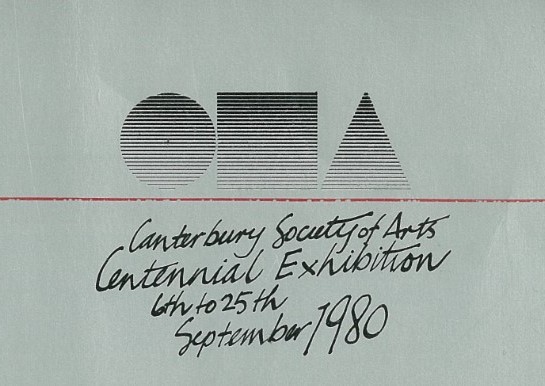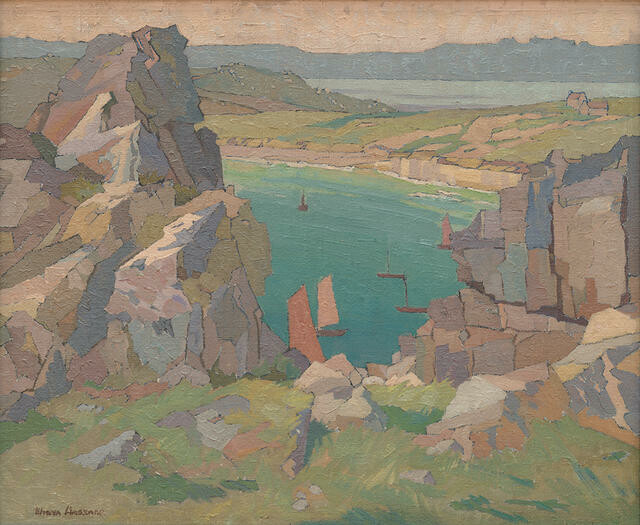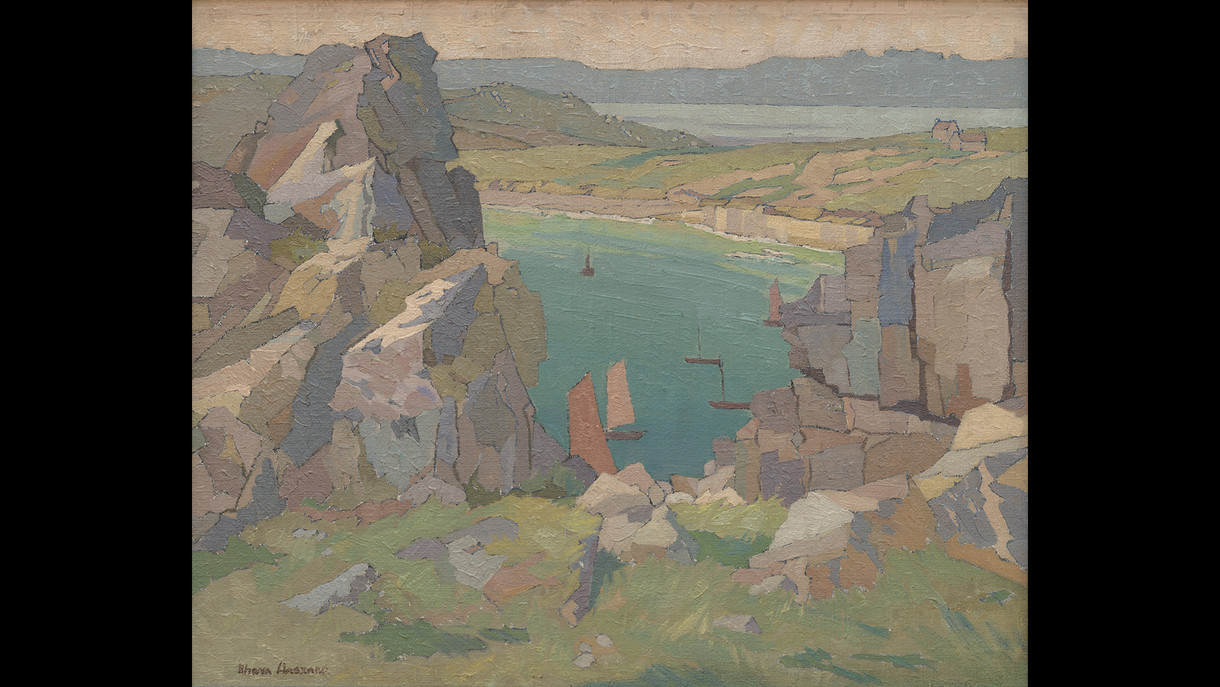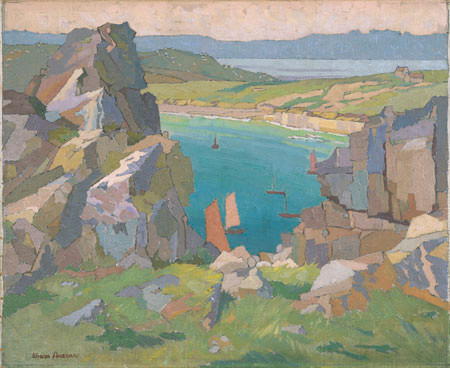Rhona Haszard
Aotearoa New Zealand, b.1901, d.1931
The Sea And The Bay
- 1927
- Oil on canvas
- Presented by the Canterbury Society of Arts, 1932
- 457 x 557mm
- 69/85
- View on google maps
Tags: bays (bodies of water), boats, cliffs, hills, landscapes (representations), mountains, natural landscapes, rock, seas
Rhona Haszard painted this vibrant work in 1927 – a result of her 1926 visit to Presqu'île de Crozon (Crozon Peninsula) in Finistère, Brittany, with her second husband Leslie Greener. Their fellow expatriate New Zealand painter Sydney Thompson was in nearby Concarneau, and they evidently met him at this time. Still an energised, recent arrival in Europe, Haszard was then reaching the pinnacle of her artistic achievement and recognition. In 1927 she had a painting accepted for the Paris Salon, another for the Wembley British Empire Exhibition (winning a bronze medal) and a third in the Society of Women Artists Exhibition in London. The couple’s tight financial situation, however, led to them leaving Brittany later that year for Egypt, where Greener took up an art and French teaching role at a British boys’ school in Alexandria. A back injury sustained by Haszard in 1928 led to the couple’s separation during her prolonged treatment in London, a critically blighted relationship, and conceivably her tragic and untimely death in Alexandria in 1931.
(The Weight of Sunlight, 16 September 2017 - 16 September 2018)
Exhibition History
Brought to light, November 2009- 22 February 2011
Rhona Haszard travelled to Europe with her husband and fellow artist Leslie Greener in 1926. ‘The sea and the bay’ was completed shortly after, in the summer of 1927 when Haszard and Greener undertook a cycling holiday of Brittany. This painting was made on that holiday in the coastal town of Camaret. The couple also spent time painting at Concarneau where they met Sydney Lough Thompson. Haszard revelled in the artistic life of London, where she was influenced by the Camden Town Group, and began to paint in the more post-impressionist style seen in ‘The sea and the bay’.
This is a scene on the Breton coast of France where Rhona Haszard and her husband, Leslie Greener, travelled in the summer of 1927. They were on a cycling holiday and Haszard subsequently produced a number of paintings of the area. She has given this part of the coastline a contemporary landscape treatment, using colour rather than tone to define the forms. Haszard developed a distinctive style, drawing on Post-Impressionism and the Canterbury landscape tradition.
Haszard was born in Thames but moved to Hokitika with her family at an early age. She studied at the Canterbury College School of Art from 1919 to 1924. Haszard and Greener married in 1925 and then travelled to Europe. In 1927 Greener took up an appointment at Victoria College in Alexandria, Egypt, and Haszard began to show her works there and in Cairo. Her last exhibition opened in Alexandria in 1931, just before her tragic death when she fell from a window of the Victoria College Tower. (Opening Gallery hang, 2003)







